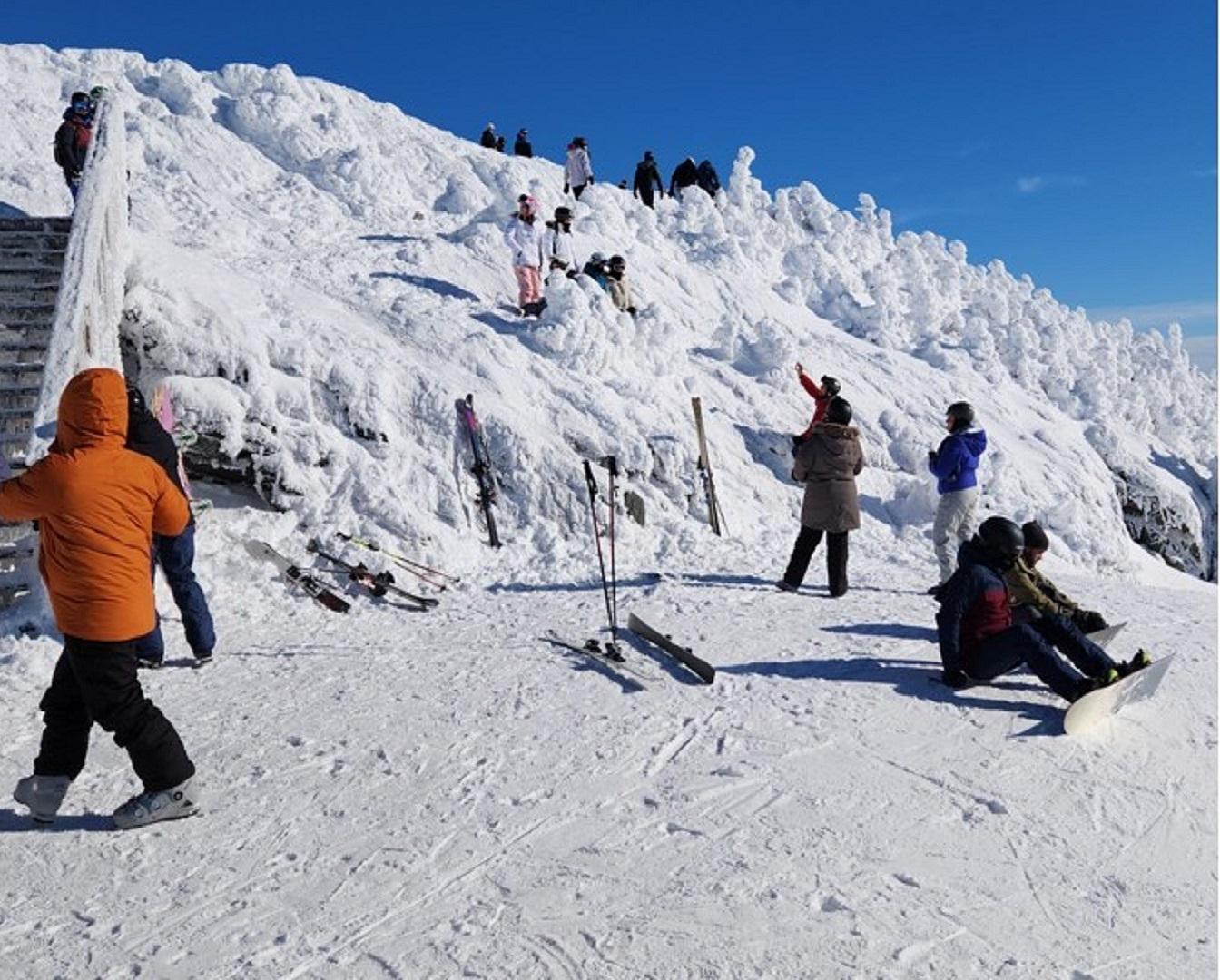Lighter & Brighter
Continuing on the topic of Safety Awareness Month, we found ourselves in a conversation with Fletcher (Kip) Potter, Jay Peak volunteer ski patroller. Kip comes from a background of all sorts of sciency stuff where he can put his Ph.D. in Forest Hydrology to use. A chairlift ride with Kip is like a semester of science, just without the late-night coffee-infused cramming sessions – or the tuition.
Pointing out that great big, bright burning light in the sky last weekend, Kip mentioned the importance of eye protection from the sun. Yet another factor that goes into preparing for weather.
The most-seasoned mountain men and women will bring a quiver of goggles (or the ever-so-ideal ones with magnetic lenses that pop on and off in less than a second) to the hill with them. Clouds come in and roll out just as quickly. But when we get locked into a high-pressure system, the clouds usually stay away. Consider it like a work break for the Jay Cloud to re-up on moisture and sneak back in a day or two later.
Well, those days of intense sun bring a factor of solar radiation that requires extra steps for protection. As Kip explains, “The amount of solar radiation (sunlight) that reflects off from a snowpack is known as albedo (not a libido, okay?). The albedo of a snowpack changes with grain size and density, the angle of incidence of the solar radiation, surface roughness of the snow and the amount of other substances in the snow, including liquid water.” In other words, angle of the sun, type of snow, and dirt and crud in the snowpack affect how the sun reflects into your eyes and onto your skin.
It’s all about how the snowpack ages. “As a snowpack ages and begins to melt the snow grains become larger in size and its liquid water content increase,” said Kip, in an excitable way only a ski patroller with a Ph.D. could really convey. “Freshly fallen snow has an albedo as high as 95 percent. Wet clean snow will have an albedo around 63 percent, whereas dirty wet snow will have an albedo near 43 percent.” And you know we don’t discriminate between clean, dirty, wet, or dry snow around here. We’ll take it all.
This science lesson also applies to how fast we start to lose the snow as we get later into the season toward late April and into May. Kip breaks it down for us. “As a snowpack ages and begins to melt, the snow grains become larger in size and its liquid water content increases,” he says. “As a result, the albedo decreases dramatically causing more solar radiation to be adsorbed, causing the snowpack to melt even more quickly.”
Kip says it’s best to wear some type of eye protection, such as shaded goggles, and to wear sunscreen on exposed skin regardless of the month, but it’s especially important in late winter and spring, dirty snow or not, as the intensity of solar radiation increases.
Thanks for reading, now go impress your friends with science.


